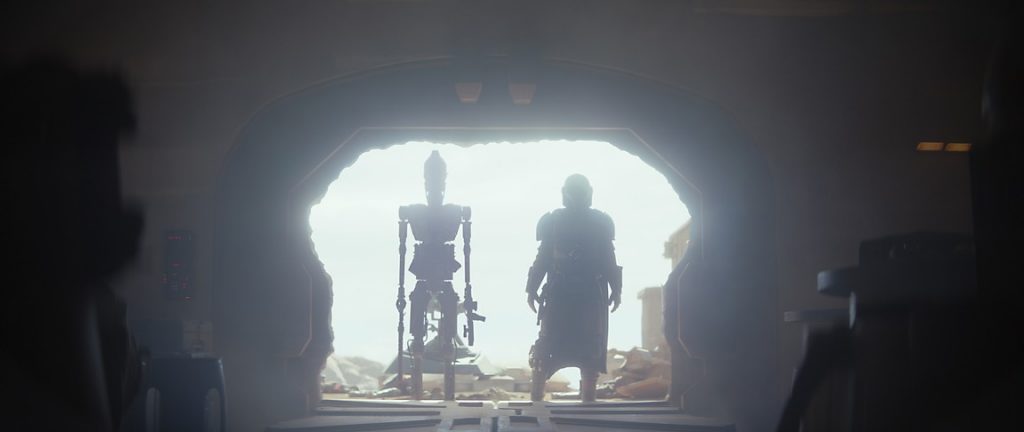
Industrial Light and Magic has put out revolutionary special effects since Star Wars began — and took it to another level with Disney+’s The Mandalorian.
In collaboration with Epic Games, ILM helped the first live-action Star Wars series create new realities in an unprecedented way with world-class virtual production value. The key technology is known as “Unreal Engine.”
This video does an exceptional job breaking down exactly how these new effects benefit everyone involved. Below is a summary of some key takeaways, but it’s a must-see for Star Wars fans and film production aficionados.
CHECK OUT: The Mandalorian boosts Jon Favreau to pilot future Star Wars
LEDs + Virtual realities = An epic series
Star Wars creator George Lucas founded ILM in 1975, and the company has been on the cutting edge of effects in film ever since. Tons of new technology came about during the original Star Wars trilogy. They changed what cinema could be.
One of the many things the Unreal Engine allows The Mandalorian creator Jon Favreau to do is put in excellent visual effects without having to add them in after filming is complete. This is possible through the use of video wall technology and real-time game engine rendering.
The combination gives flexibility in terms of switching between shooting locations seamlessly and opens up all sorts of possibilities for pioneering new fictional worlds.

Not only does this cut down a show’s production turnaround, but it also gives actors more to play off of in real time. Instead of going all-green screen and forcing actors to rely almost solely on imagination, there’s realistic landscape and elements to play off of.
Of course, it’s a humongous task for the production team and crew to put all these together. On the other hand, all that preparation beforehand creates a smoother process once shooting commences.
CHECK OUT: What Disney+ Obi-Wan Kenobi series can learn from The Mandalorian
What do these effects mean for The Mandalorian & Star Wars’ future?
This technology’s blend of visual grandeur and on-set practicality should only expedite the time between seasons of the show. After all, Season 2 of The Mandalorian is already coming in October.
Additionally, this latest innovation should have a trickle-down effect of sorts in aiding future Star Wars projects.
One of The Mandalorian‘s strengths was blending the franchise’s trademark world-building with grounded storytelling and strong character work. In various ways, neither the prequel nor sequel trilogy succeeded as well in executing those concepts.
Disney+ series centered on Cassian Andor and Obi-Wan Kenobi are in development now. Demand for Star Wars is always going to be present, yet it’s important to tell a good story.
The Unreal Engine, ILM’s continued insistence on pushing boundaries and Disney+ resources seemingly guarantee a bright Star Wars future.
This technology’s prominence seems ripe for expansion beyond a galaxy far, far away. It ought to cross over into other world-class, big-budget productions. That’s especially true in the science fiction and fantasy genres.
CHECK OUT: SNIPdaily’s The Mandalorian Season 1 review
More About:Streaming
